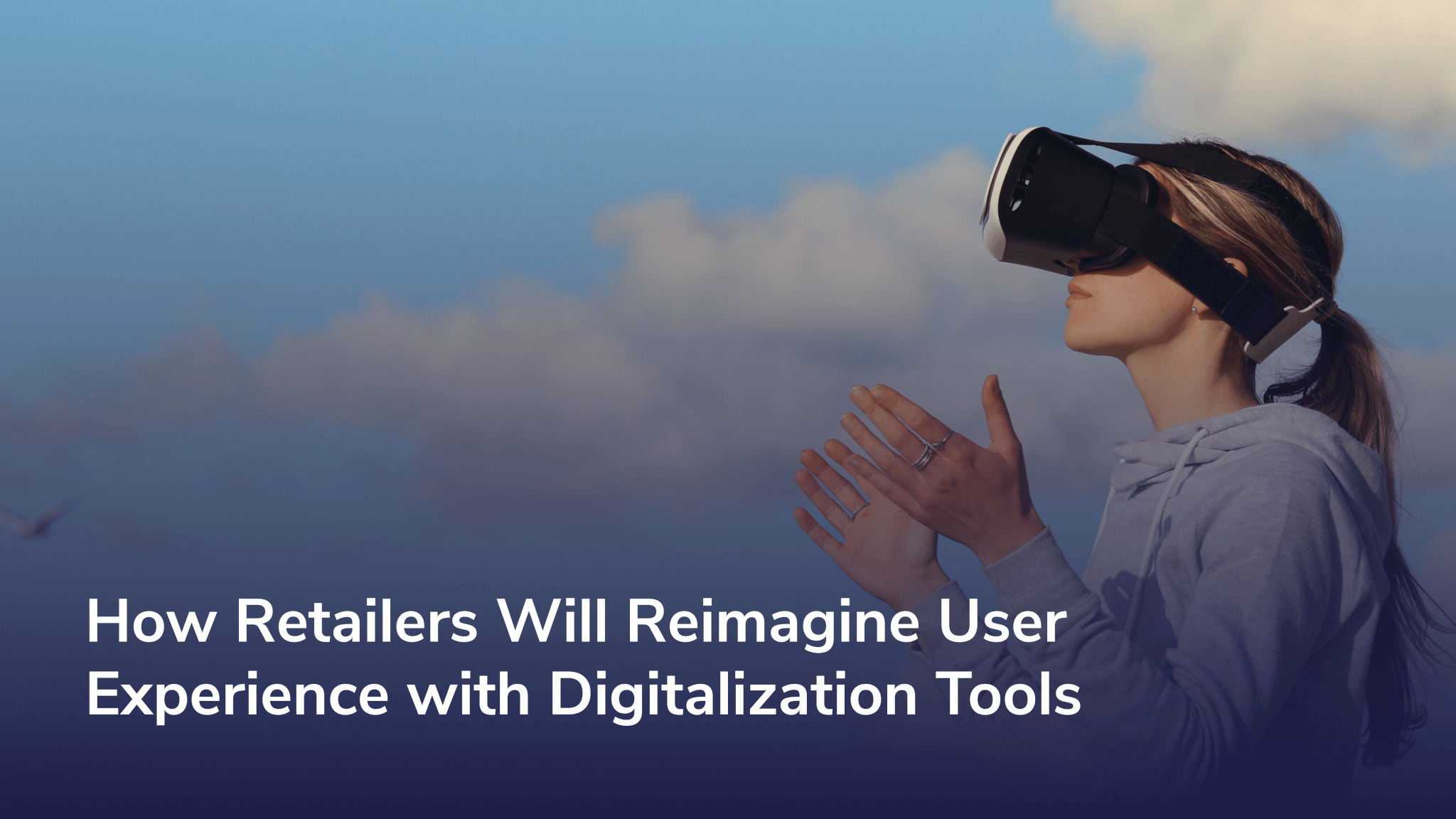It is pretty exciting to imagine how retailers will reimagine user experience with digital tools down the line, since the digital landscape evolves so rapidly – from the rise of ChatGPT to no-code or low-code solutions, which have democratized access to tech-powered user experience tools.
In this environment, retailers are continually seeking innovative ways to enhance the user experience and stay ahead of the competition. Retailers will reimagine user experience with digitalization tools in ways we thought impossible until very recently.
The retail industry has undergone a profound transformation in recent years, driven by the relentless wave of digital innovation. The convergence of technology and consumer expectations has led to a paradigm shift in the way we shop.
Traditional brick-and-mortar stores are transforming into seamless, omnichannel shopping experiences, and retailers are leveraging digitalization tools to reimagine the user experience, creating a more personalized, engaging, and convenient journey for customers.
The Rise of Digital Transformation in Retail
Digital transformation has become a critical priority, and it is mostly driven by the changing expectations of tech-savvy, digitally native customers and their needs to adapt to a fast-paced, online-driven market. Retailers are looking at new ways to streamline operations, optimize supply chains, and gather valuable data insights that drive better decision-making.
One of the key benefits to look forward to is the ability to gather and analyze customer data. Retailers can leverage this data to gain a deeper understanding of their customers’ preferences, behaviors, and purchase history, by implementing advanced analytics solutions that reimagine personalized shopping experiences, recommending products tailored to individual customers’ needs and offering targeted promotions. By offering relevant and personalized experiences, retailers can build stronger connections, foster customer loyalty, and increase customer lifetime value.
What 10 years ago was a rare occurrence is now the standard practice for retailers, which stands to show how much we can build on top of existing tech solutions. So what changed in the past decade?
- Mobile apps have become an integral part of the retail landscape, providing customers with easy access to products, personalized offers, and a seamless shopping experience. With digitalization tools, retailers can integrate mobile payment solutions, enabling customers to make quick and secure transactions. Furthermore, retailers can leverage location-based services to send push notifications, alerting customers to nearby promotions or exclusive offers.
- Digitalization tools play a vital role in optimizing inventory management processes for retailers. By implementing advanced inventory management systems, retailers can accurately track stock levels, automate replenishment, and minimize out-of-stock situations. This ensures that customers have access to the products they desire, reducing frustration and enhancing their overall shopping experience.
- Social media platforms have become influential digitalization tools for retailers to engage with customers. Through social commerce integrations, retailers can enable seamless purchasing directly from social media platforms, providing a frictionless experience for customers. Additionally, retailers can collaborate with influencers to promote their products, leveraging their reach and credibility to drive sales and create a more authentic connection with customers.
The Future Of Omnichannel & Reimagining User Experience
Seamless omnichannel experiences are here to bridge the gap between online and offline channels, creating better, tech-driven value for customers. With features like click-and-collect, buy online, pick up in-store (BOPIS), and same-day delivery, customers can now enjoy the convenience of shopping across multiple channels with none or very little of the friction associated with brick and mortar stores. Especially since retailers can leverage geolocation to send personalized offers or notifications when customers are near their physical stores, footfall and the overall user experience are significantly enhanced.
On top of this, AR and VR technologies have revolutionized the way retailers engage with customers: by incorporating these digitalization tools into their strategies, they can offer immersive experiences that bring products to life, and they can start to reimagine user experience. Customers can virtually try on clothing, visualize furniture in their homes, or even experience virtual walkthroughs of physical stores. These interactive experiences not only enhance the user experience but also reduce uncertainty and increase customer confidence in their purchasing decisions. There is also a good possibility that recent innovations such as Apple Vision Pro will make shopping experiences even more digitally native and embedded into our daily habits.
Enhanced customer support with AI chatbots have transformed customer support in the retail industry, another way to reimagine user experience. AI chatbots can provide instant assistance, answering customer queries, guiding them through the purchasing process, and offering personalized recommendations. These chatbots can handle multiple conversations simultaneously, ensuring swift and efficient customer support, thereby improving customer satisfaction and loyalty.
Digitalization tools are revolutionizing the way retailers approach user experience, empowering them to offer personalized, convenient, and engaging journeys for their customers. Through data analytics, seamless omnichannel experiences, AR/VR technologies, AI-powered chatbots, mobile apps, and enhanced inventory management, retailers can meet evolving customer expectations and gain a competitive edge in the market. As digital transformation continues to reshape the retail industry, embracing these tools will be crucial for retailers to succeed in an increasingly digital world.


